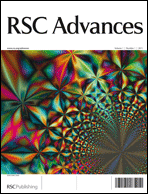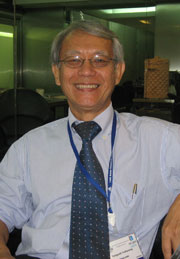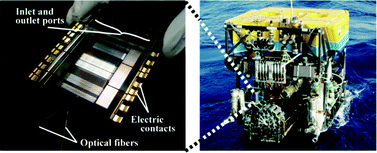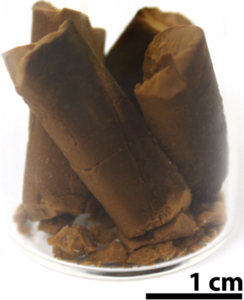RSC Advances wishes to celebrate Australia Day by highlighting all of our articles that are written by authors from Australia. Please note that all the articles are free to download upon a simple registration process.
Research progress and materials selection guidelines on mixed conducting perovskite-type ceramic membranes for oxygen production
Kun Zhang, Jaka Sunarso, Zongping Shao, Wei Zhou, Chenghua Sun, Shaobin Wang and Shaomin Liu
RSC Adv., 2011, 1, 1661-1676, Review
Effect of different additives on the hydrogen storage properties of the MgH2-LiAlH4 destabilized system
M. Ismail, Y. Zhao, X. B. Yu and S. X. Dou
RSC Adv., 2011, 1, 408-414
Graphene–V2O5·nH2O xerogel composite cathodes for lithium ion batteries
Guodong Du, Kuok Hau Seng, Zaiping Guo, Jun Liu, Wenxian Li, Dianzeng Jia, Chris Cook, Zongwen Liu and Huakun Liu
RSC Adv., 2011, 1, 690-697
Ultraflexible plasmonic nanocomposite aerogel
Yi Chen, Khee Chaw Ng, Wenyi Yan, Yue Tang and Wenlong Cheng
RSC Adv., 2011, 1, 1265-1270
Copper(I) speciation in mixed thiosulfate-chloride and ammonia-chloride solutions: XAS and UV-Visible spectroscopic studies
Barbara E. Etschmann, Jay R. Black, Pascal V. Grundler, Stacey Borg, Dale Brewe, D. C. McPhail, Leone Spiccia and Joël Brugger
RSC Adv., 2011, 1, 1554-1566
Formation of a chrome-free and coloured conversion coating on AA6063 aluminium alloy
Tingyi Chen, Wenfang Li and Jackie Cai
RSC Adv., 2011, 1, 607-610
Controlled hydrolysis of aryltellurium trichlorides using 2-pyrrolidinones: isolation and structural characterization of monomeric aryltellurium(IV) monohydroxides
Shafalika Misra, Ashok K. S. Chauhan, Ramesh C. Srivastava, Andrew Duthie and R. J. Butcher
RSC Adv., 2011, 1, 808-816
Dispersion of SnO2 nanocrystals on TiO2(B) nanowires as anode material for lithium ion battery applications
Zunxian Yang, Guodong Du, Qing Meng, Zaiping Guo, Xuebin Yu, Zhixin Chen, Tailiang Guo and Rong Zeng
RSC Adv., 2011, 1, 1834-1840
A novel bath lily-like graphene sheet-wrapped nano-Si composite as a high performance anode material for Li-ion batteries
Yu-Shi He, Pengfei Gao, Jun Chen, Xiaowei Yang, Xiao-Zhen Liao, Jun Yang and Zi-Feng Ma
RSC Adv., 2011, 1, 958-960
Selective adsorption and photocatalysis of low-temperature base-modified anatase nanocrystals
Manoj A. Lazar and Walid A. Daoud
RSC Adv., 2012, 2, 447-452
Analytical-scale purification of trichostatin A from bacterial culture in a single step and with high selectivity using immobilised metal affinity chromatography
Najwa Ejje, Ernest Lacey and Rachel Codd
RSC Adv., 2012, 2, 333-337
K0.25Mn2O4 nanofiber microclusters as high power cathode materials for rechargeable lithium batteries
Chaofeng Zhang, Chuanqi Feng, Peng Zhang, Zaiping Guo, Zhixin Chen, Sean Li and Huakun Liu
RSC Adv., 2012, Advance Article, DOI: 10.1039/C1RA00510C, Paper
Enhanced hydrogen storage properties of NaAlH4 co-catalysed with niobium fluoride and single-walled carbon nanotubes
Jianfeng Mao, Zaiping Guo and Huakun Liu
RSC Adv., 2012, Advance Article, DOI: 10.1039/C1RA00645B, Paper
Clicking dendritic peptides onto single walled carbon nanotubes
Eli Moore, Peng-Yuan Wang, Andrew P. Vogt, Christopher T. Gibson, Vattekat Haridas and Nicolas H. Voelcker
RSC Adv., 2012, Advance Article, DOI: 10.1039/C2RA00791F, Communication
Self assembly of bivalent glycolipids on single walled carbon nanotubes and their specific molecular recognition properties
Bandaru Narasimha Murthy, Susanne Zeile, Monessha Nambiar, Matthew R. Nussio, Christopher T. Gibson, Joseph G. Shapter, Narayanaswamy Jayaraman and Nicolas H. Voelcker
RSC Adv., 2012, Advance Article, DOI: 10.1039/C2RA01192A, Communication
Design of low-charge peptide sequences for high-yield formation of titania nanoparticles
Chun-Xia Zhao, Lei Yu and Anton P. J. Middelberg
RSC Adv., 2012, Advance Article, DOI: 10.1039/C2RA00726F, Communication















 RSC Advances
RSC Advances





